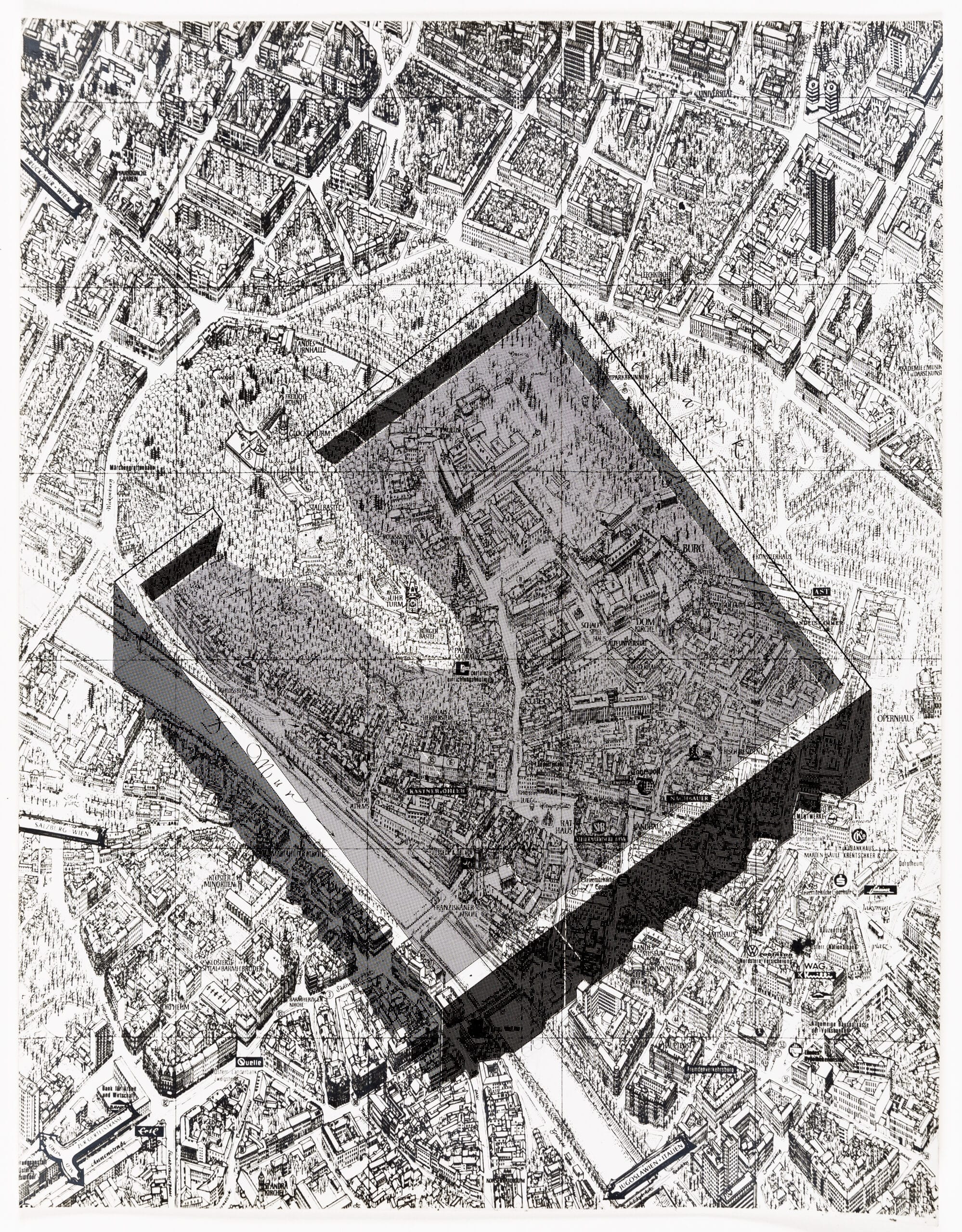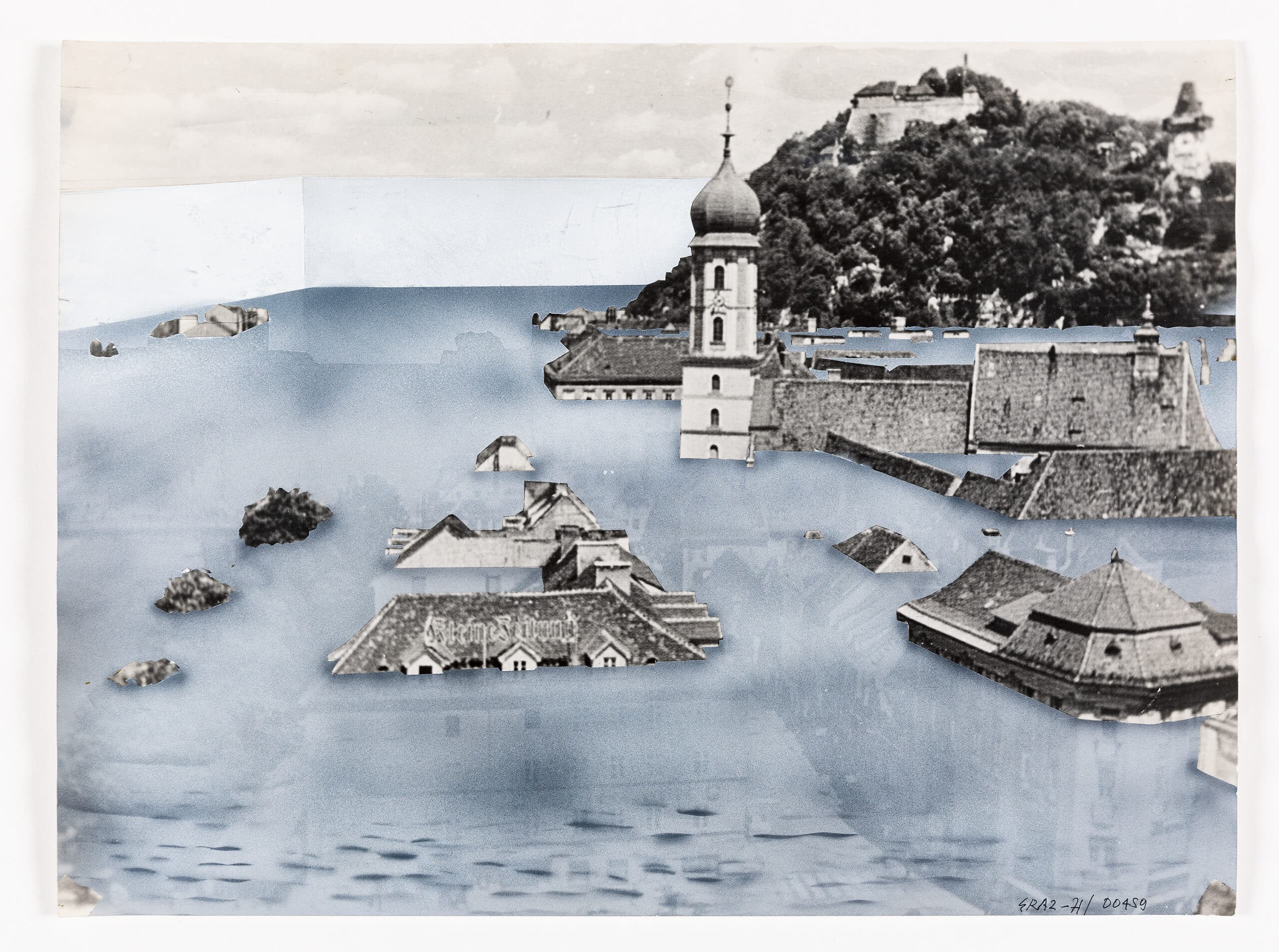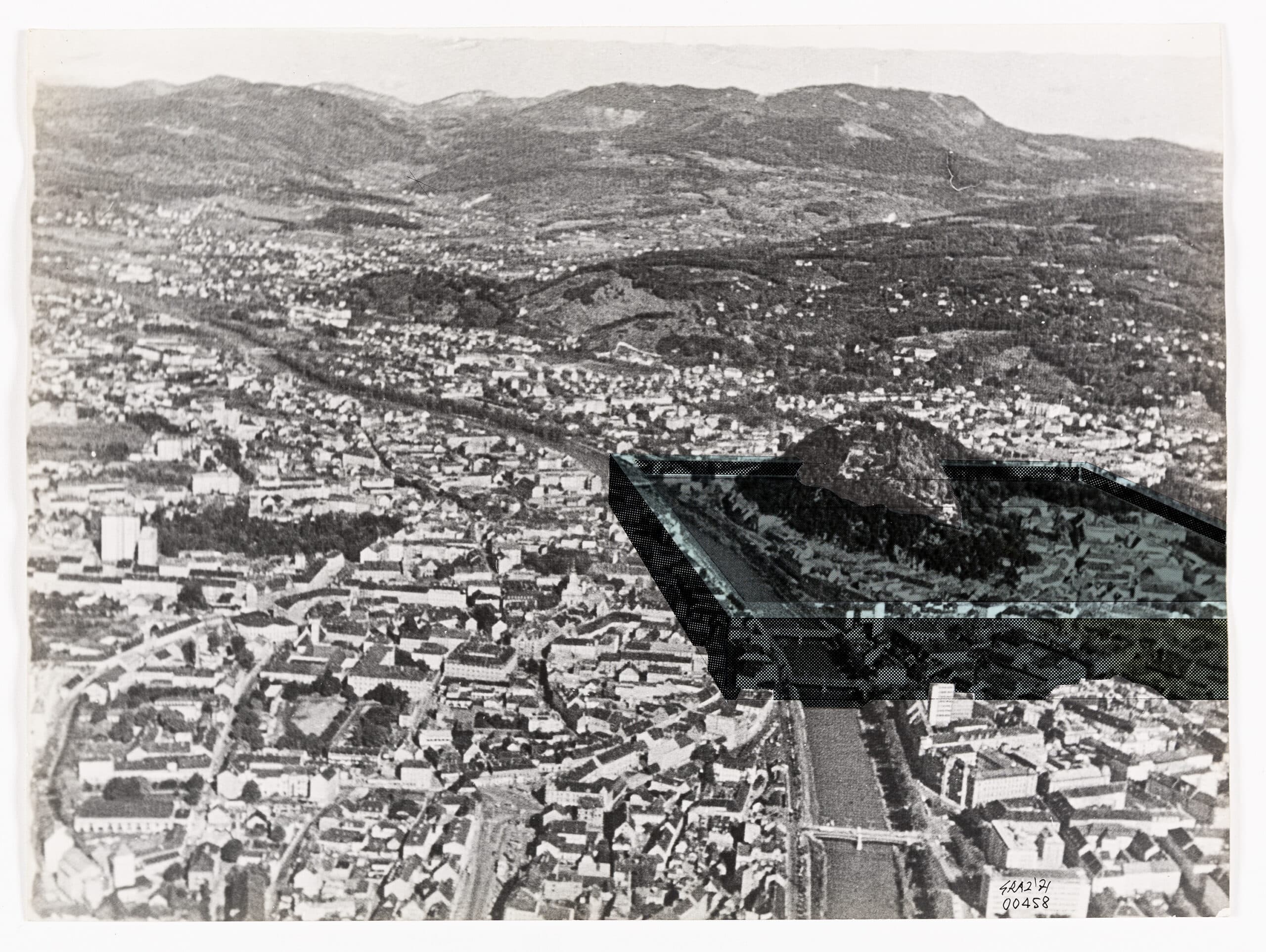A Bath for Immortality
It is 1971 and the city is Graz.
‘If we look at the city as a set of artefacts that can be modified over time, homogeneous and isotropic, correlated to the physical reality of the landscape and the territory, and at the same time if we refuse to take part in this bricolage action that we poorly call architecture, we can think of intervening with elements that are as simple and amorphous as possible: perhaps only with water, clouds, or strips of mirror.’[1]

A complex of pumps extracts the water from the river and injects it into a square basin slowly submerging the city and its monuments, while saving them from the modifying action of reality. At the end of the filling, Graz appears as a city on a plain between hills, crossed by a river, and with a mirrored parallelepiped at its centre, from which the upper part of the fortified hill of the Schlossberg emerges. The outer walls of the parallelepiped are covered with mirrored steel plates. Architecture becomes reflection and measurement.
Buildings are better and longer preserved submerged rather than exposed to the elements: they are more unlikely to be subjected to disfiguring operations related to speculative building activities. A new stratigraphy is created, contemporary, the child of modern man. The object is concealed and highlighted in its presence or absence from view, it exists—we know this—but removed from our gaze it reveals all the emptiness that its non-existence leaves.
Superstudio, a team of sophisticated technicians, specialises in delicate operations of replacement and grafting of revitalizing mechanisms. Water becomes in this work, as never before, a memory of time passed over thousands of years, a record of the movement of millions of organisms through space and time.

To preserve the city, a new dimension is created in which the aura of archaeology slowly emerges, an interrupted past, photographed and shrouded in a nebula. An image in which death no longer exists. A deep impression can be made by monuments transplanted in a desert landscape made of water. The surrounding natural environment also takes on a strange appearance.
The objects undergo a metamorphosis, and are charged with the values of the myth, of sacredness through a reconstruction of the relationship between existence and use.

What is foreshadowed in the Superstudio stories-drawings is the fulfilment of their destiny.[2] There is a narrative dimension that, by containing and structuring it, gives the sequence of events an absolute and a-historical character. Superstudio’s entire journey, on closer inspection, can be thematised in a series of passages that increasingly investigate the relationship between representation and criticism, where architecture becomes a ‘cross-discipline’ that identifies trend lines and attempts their synthesis for an orderly development of life on earth.[3]
Something that Superstudio draws from its creative mine is surrealism: a surrealism that is the delight of delights. The resulting gallery of images cannot be explained at all through surrealism itself, but is functional to a multiple ideology, which challenges every possible logic of reason. Narrative invention on the one hand, scathing and radical critique of the role of architecture in contemporary society on the other, to the point of questioning its very foundations: all must be held and understood together. The modern world can only be tolerated if it is constantly provoked and this provocation, aimed at highlighting—and challenging—the automatic processes of homologation, is already a creative act.
‘A city is a combination of many things: memory, desires, signs of a language; it is a place of exchange […] these exchanges […] involve words, desires, and memories.’[4]

Notes
- As quoted in Gabriele Mastrigli’s Supertudio Opere 1966-1978 (Macerata: Quodlibet srl, 2016), 260. The text (Tre modi di intervento indolore sulla città) is the report of the project submitted by Superstudio for the idea competition Intermedia Urbana, announced by the biennial Trigon ’71, and exhibited at the Künstlerhaus in Graz between the 8th of October and 19th of November 1971.
- See the introduction of Gabriele Mastrigli in Supertudio Opere 1966-1978 (Macerata: Quodlibet srl, 2016), XII. Rarely in the history of architecture is the relationship between writing and image so circular and tight as in Superstudio’s work. Suspended between art, literature, science and philosophy, Superstudio’s architectural narrative appears as a bearer of value in itself, without any need to refer to an external truth, to a more or less secret content, to a promise, to a salvation.
- Superstudio’s work was essentially an incessant process of accumulation: selection and cataloguing of the fragments of a collective memory, recognised in pop culture as in the classical tradition, in the phenomenology of modernity as in the anthropological gaze, in the perspectives of scientific research as in investigations of marginal cultures.
- Italo Calvino, ‘Italo Calvino on “Invisible Cities”’, A Journal of Literature and Art, No.8 (Spring/Summer 1983), 37-42 (41).
Clara Maria Puglisi is teaching assistant at the ETH in Zürich, for the Chair of Design and Construction. She studied engineering and architecture in Italy and Germany. After working in Swiss architecture offices, she founded the collective miscellaneous. Based in Basel, her work ranges from architectural competitions to exhibition design.
This text is one of the selected responses to the Open Call: Storytellers, Observed—an inquiry into the origin and circumstances of a single drawing (or series of drawings), observing the ways by which each achieves the specific purpose for which it was made. For further information click here.
